Wow! After a race to the finish in time for a trip to the UK, I couldn’t wait to get back to the books on my return. Delighted with my success in semester one, I am determined to continue to work hard and repeat that performance. However, after only a couple of lectures, it looks like this semester is shaping up to be a tough one. I am psyched for the challenge!
Top 3 things I have learnt this week:
1. Wine shows are fascinating
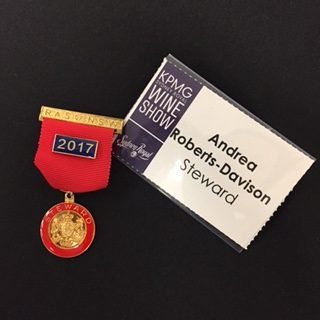 My return to the books was actually a little delayed this week, as I had the privilege of being selected to steward at the KPMG Sydney Royal Wine Show. Super nervous, with very little idea of what to expect, I boarded a plane to the event. Held over four days at the Exhibition Centre, Sydney Olympic Park, this epic glass-fest blew my tiny mind.
My return to the books was actually a little delayed this week, as I had the privilege of being selected to steward at the KPMG Sydney Royal Wine Show. Super nervous, with very little idea of what to expect, I boarded a plane to the event. Held over four days at the Exhibition Centre, Sydney Olympic Park, this epic glass-fest blew my tiny mind.
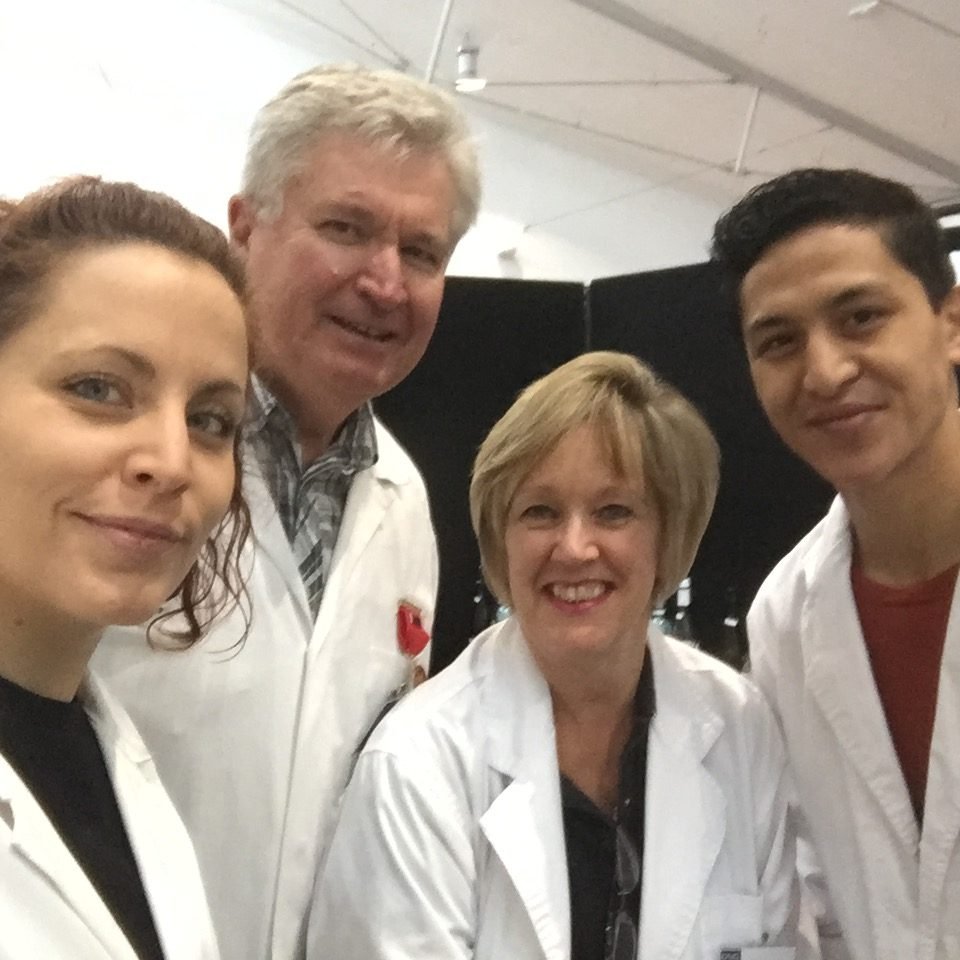
Dream team: Justin, Ruth and Steve
Now when I see those little medals on wines, I will really appreciate what they went through to get them. Each exhibited wine had to stand out from its class (sometimes up to 200 wines) and impress a panel of five or more judges and associate judges. For a medal, they had to impress a whopping 25 judges. All had clear expectations of the particular varietal, but with a slightly different opinion as to the particular style. At the end of each day the judges, with their bluish lips, had swirled, sniffed, sipped and spat around 125 wines each!
The perks
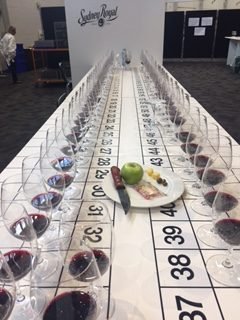
SO much Sav
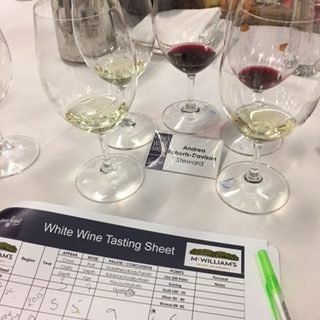
Judging tutorial
Everyone worked hard, but we were well looked after in exchange. All of the stewards and judges volunteer to work at the show, but I felt that I got more out of it than I put it. Not only was there a tutorial for stewards to help us understand the finer workings of the show, we even got to award the rosé trophy as a team. The final thank you luncheon, like all of the food provided, was delicious. We were given a fabulous parcel of wine for our trouble too.
The opportunity to taste some stunning wines from around Australia, as well as brush shoulders with some wine superstars was priceless. I had a wonderful time and made some lovely new friends. I will write a little more about the whole event once the winners have been announced.
2. Spur and Cane Pruning
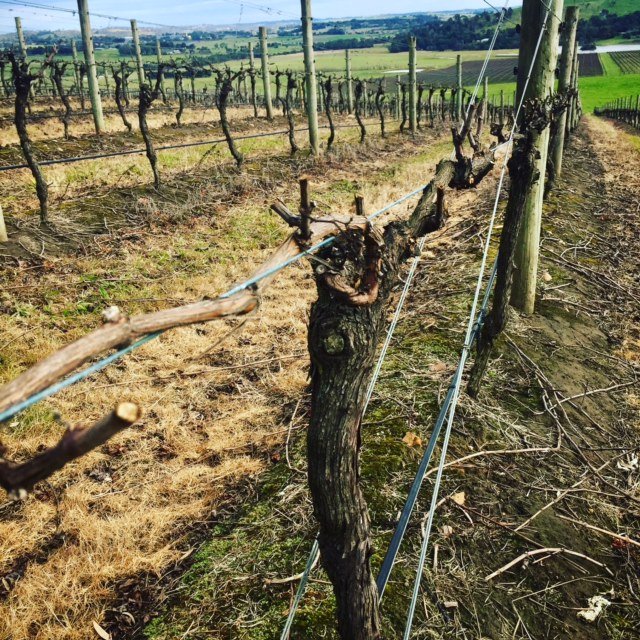 Last semester was very much winemaking centred. Semester two is more about the viticulture. I was unable to attend my Vineyard Management lecture this week. Unperturbed, I have really enjoyed using recorded resources and YouTube to learn about pruning vines. This is the perfect time of the year to cover this, as I discovered on a trip to the Yarra Valley this weekend. During this dormant phase of the year, vignerons all over Australia are cutting back their vines in time for the next season. There was a wonderful mixed bag of techniques for me to observe.
Last semester was very much winemaking centred. Semester two is more about the viticulture. I was unable to attend my Vineyard Management lecture this week. Unperturbed, I have really enjoyed using recorded resources and YouTube to learn about pruning vines. This is the perfect time of the year to cover this, as I discovered on a trip to the Yarra Valley this weekend. During this dormant phase of the year, vignerons all over Australia are cutting back their vines in time for the next season. There was a wonderful mixed bag of techniques for me to observe.
To me, vineyards are enchanting places…
They look beautiful in any season, even the most bleak, but now I can appreciate the severity with which the vines are pruned. There are two methods: Spur pruning cuts selective canes ( 1 year old shoots) back to two nodes (buds) above a lateral cordon (permanent wood arm reaching out from a central trunk). All other growth is removed and the aim is to keep the vine growing in a similar shape. Cane pruning removes all of the canes, except a few arising from the crown above the central trunk. These remaining canes are wound around a frame, from which next year’s growth will bud.
Though it may sound complex, I can’t wait to have a go out in the vineyard. The difference between good and excellent wine is all about the viticulture. Even more fascinating than the snipping rules to me, are the ways in which the pruning can be used to manipulate the vigour of the vine and the yield of the fruit in subsequent years. Vines are diurnal. They already have the buds from which they will fruit when pruning from the previous vintage. Care must be taken though, just one careless pruner in a vineyard can significantly reduce the next vintage yield. Gulp!
3. All roads lead to amber

The appearance of a wine is the first clue to its provenance
This week I have also started Wine Evaluation 1, which later will be combined with my WEST 2 sommelier exam. Tasting starts in week 2 and naturally I am really looking forward to receiving my little tasting bundle in the post. This week, however, we learnt that all wine tends towards an amber colour on ageing – no matter which colour it starts at. We also learnt that the appearance may often be the first step to determining the provenance and other information about the wine in your glass.
Clarity and colours are often associated with certain varietals. For example; Soave is often very pale, whilst wines with a black hue are associated with Shiraz from Australia or South Africa. Yellow colouring in white wines maybe indicative of age, or the use of oak. An olive tinge to the outer meniscus of the glass can indicate an aged fortified wine etc. There are many more…
Naturally if it was this easy to deduce information about wines, being a sommelier wouldn’t be quite so hard. There is a great deal more to it, but it is only week one for me. We also learnt this week that psychology can play a big and often confusing part in wine judging. Often the colour of a wine can heavily influence our perception of how that wine may taste. We often have a bias for certain wines and a preference for wines we believe to be of a high quality. To ensure fairness in wine competitions, the tastings are blind; the judges do not see the bottles as they are poured. Though they can, of course, see the colour.
Next week:
I do my first tasting, make the mulled wine for Xmas in July and jump straight into some literature reviews. See you then.
Find out more about my journey by subscribing to the mailing list – I promise not to spam you x

